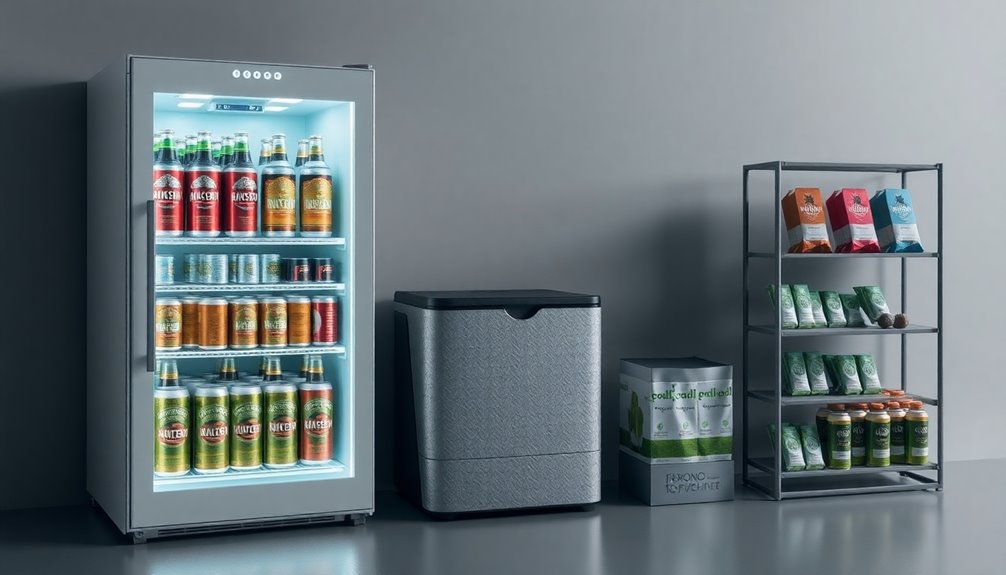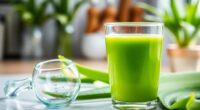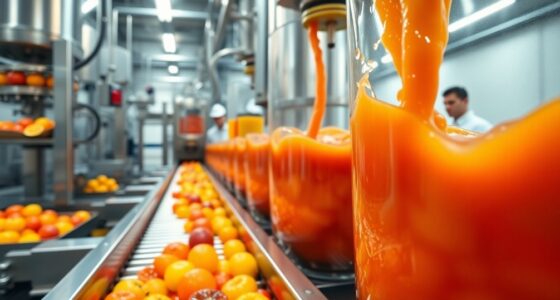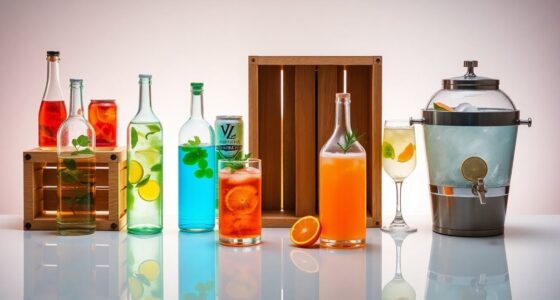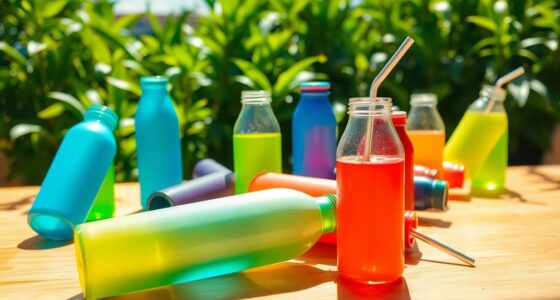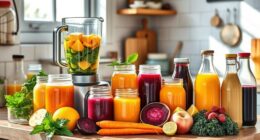You'll discover how innovative biodegradable packaging solutions and smart technologies are transforming beverage storage. Brands are now opting for sustainable materials like rPET and plant-based options, making a real difference in the fight against plastic waste. Enhanced functional designs cater to user needs, while tactile and visually appealing features grab attention. Plus, portion control and IoT integration streamline your drink experience. Keep exploring to uncover the top innovations in beverage packaging that's changing the game!
Key Takeaways
- Carlsberg's Green Fiber Bottle uses biodegradable materials, significantly reducing plastic waste in beverage packaging.
- Smart packaging technologies, like temperature-sensitive labels, ensure optimal beverage quality during storage and consumption.
- Customizable and ergonomic designs enhance user experience while promoting sustainable practices through reusable packaging.
- Tetra Pak's plant-based cartons minimize environmental impact and improve inventory management with efficient storage solutions.
- Integrated IoT and smart sensors provide real-time data for better inventory tracking and waste reduction.
Biodegradable Packaging Solutions

As the global beverage industry grapples with the staggering reality of producing around 500 billion plastic bottles each year, the push for biodegradable packaging solutions has never been more critical.
You'll find companies like Carlsberg leading the charge with their Green Fiber Bottle initiative, which utilizes biodegradable materials sourced from wood fibers. Tetra Pak is also innovating with plant-based paper boxes, incorporating caps made from sugar cane-derived polymers.
These advancements not only enhance sustainable packaging but also aim to reduce CO₂ emissions. Additionally, options made from barley straw, bamboo, and recycled paper are emerging, further minimizing environmental impact.
As brands increasingly adopt 100% recycled plastic (rPET), the beverage sector is taking significant strides toward a more sustainable future. Moreover, anti-aging drinks made from natural ingredients can be packaged in these innovative solutions, promoting both health and environmental sustainability.
Smart Packaging Technologies

Smart packaging technologies are revolutionizing how you interact with your beverages.
With IoT integration, you can benefit from real-time data that enhances your drinking experience, while AI-driven insights offer personalized recommendations just for you.
Plus, blockchain guarantees that you have traceability on every sip, providing transparency and trust in what you're consuming.
IoT Integration Benefits
Integrating IoT technology into beverage packaging revolutionizes how products are tracked and managed throughout the supply chain.
With IoT integration, you gain real-time visibility, enhancing transparency and accountability among suppliers and consumers. Smart packaging utilizes sensors to monitor environmental conditions, ensuring your beverages maintain peak quality from production to distribution.
By incorporating QR codes and NFC technology, customers can easily access detailed information about beverage origins and nutritional content, enriching their experience.
Furthermore, IoT-driven automation in smart warehousing streamlines inventory management, predicting stock needs and reducing waste.
This data-driven approach empowers companies to make informed decisions, ultimately leading to personalized marketing strategies that cater to consumer preferences, making your beverage offerings even more appealing. Additionally, high-quality content plays a pivotal role in consumer engagement, as it increases trust and encourages repeat purchases.
AI-Driven Insights
While exploring the world of beverage packaging, you'll find that AI-driven insights are transforming how brands connect with consumers.
Smart packaging technologies, like QR codes and NFC, put detailed information about beverage origins and nutritional content right at your fingertips.
Augmented Reality (AR) features elevate the consumer experience, allowing brands to share their stories and build trust.
Crown's innovative Reactinks™ Colour Changing Can only captivates with its visuals but also indicates ideal drinking temperature, enhancing packaging design.
Plus, the Emprint™ Tactile Printed Can's micro-embossed finish engages multiple senses, making your interaction more immersive. Additionally, the use of high refresh rates in projection technology can inspire innovative designs that enhance visual appeal in packaging.
Blockchain for Traceability
As brands embrace innovative packaging technologies, blockchain is emerging as a game-changer for traceability in the beverage industry. This powerful blockchain technology enhances supply chain visibility by securely tracking product origins and processes, building trust among beverage companies and consumers.
By ensuring the traceability of ingredients, you support sustainability goals while streamlining transactions and record-keeping in production. Real-time monitoring of products allows for swift responses to quality control issues or recalls, safeguarding your brand's reputation.
Blockchain can store detailed information about each batch, including production methods and ingredient sourcing, accessible via QR codes. Ultimately, adopting blockchain boosts consumer confidence, providing verifiable proof of authenticity and a commitment to sustainable practices.
Enhanced Functional Designs
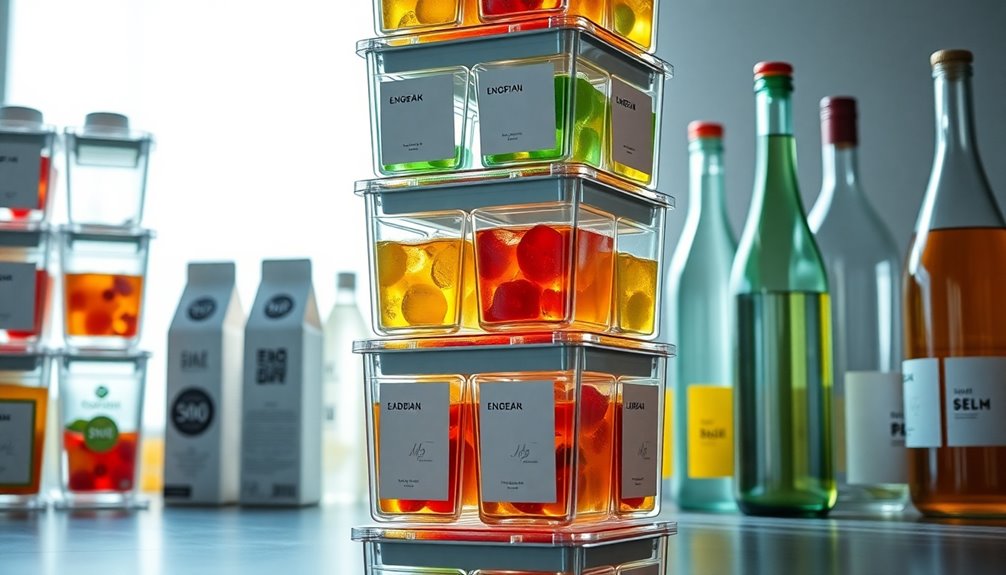
Enhanced functional designs are transforming the beverage industry by making products more user-friendly and appealing.
Think about Oshun's electrolyte concentrate in a soap-pump package, which promotes daily use and aligns with your self-care routine.
Kloo's luxury coffee packaging, designed like a perfume bottle, elevates your coffee experience and justifies its higher price.
The 86 Co. spirits bottle features ergonomic grip zones and removable labeling, enhancing usability for bartenders and consumers alike.
Hard to Port's sculpted octopus bottle marries tactile appeal with functionality, making handling a breeze.
Finally, HeatGenie's Reclosable Easy-Open End (REOE) technology offers customizable convenience, allowing easy reclosure for on-the-go consumption.
These innovations greatly enhance the consumer experience, ensuring every sip is enjoyable.
Sustainable Material Innovations
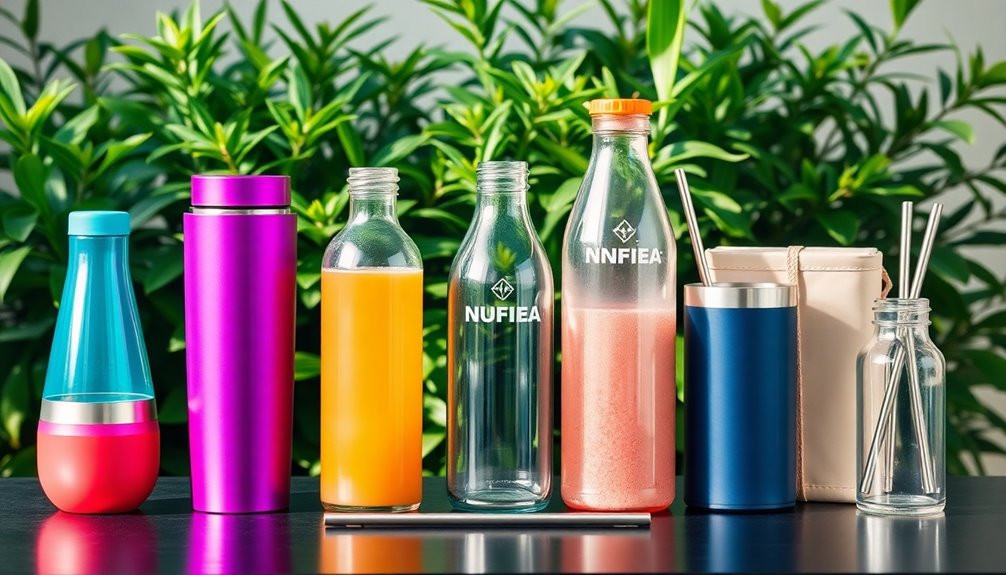
Sustainable material innovations are reshaping the beverage industry, addressing the pressing challenge of plastic waste. With approximately 500 billion plastic bottles generated annually, the shift towards sustainable packaging is essential.
Additionally, more companies are adopting 100% recycled plastic (rPET), which reduces reliance on virgin materials. Innovations in sustainable packaging also include biodegradable materials like barley straw, bamboo, and recycled paper, helping to minimize landfill waste.
Tetra Pak's introduction of plant-based paper boxes with sugar cane-derived caps enhances renewable content, promoting CO₂ reductions. Furthermore, the development of nanocomposites adds antimicrobial properties, ensuring safety while preventing spoilage.
These advancements not only support environmental goals but also meet consumer demand for eco-friendly options, marking a significant step forward in sustainable beverage storage solutions.
Customizable Beverage Containers
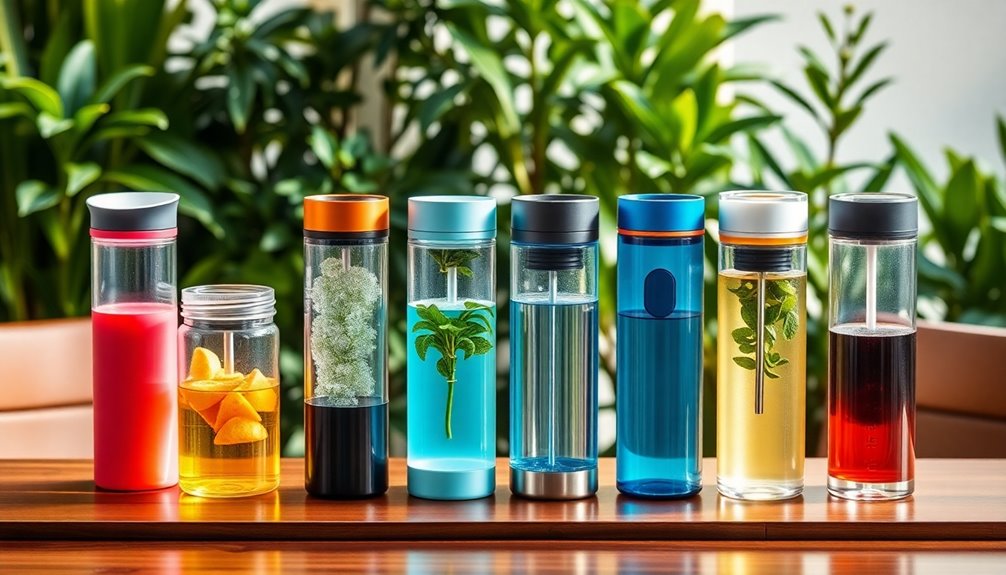
With the rise of consumer preferences for personalization, customizable beverage containers are transforming how brands connect with their audiences. You can now enjoy beverage containers that reflect your style and values.
These options make each sip more meaningful, allowing you to express yourself through:
- Personalized labels with your favorite quotes or images.
- Unique bottle shapes that stand out and grab attention.
- Reusable packaging that's not only functional but also eco-friendly.
As brands embrace sustainably sourced materials and innovative designs, you'll find ergonomic bottles that fit your lifestyle while reducing waste.
These customizable beverage containers enhance your experience, making every drink feel special and aligned with your values. It's about more than hydration; it's about connection.
Temperature-Sensitive Packaging

When it comes to enjoying your favorite beverages, temperature-sensitive packaging makes a significant difference.
With smart packaging solutions that change color at specific temperatures, you can quickly see if your drink is just right for sipping.
This innovation not only enhances your experience but also guarantees your beverages stay fresh and safe to enjoy.
Temperature Control Mechanisms
Temperature-sensitive packaging has revolutionized how you experience beverages, guaranteeing they're served at just the right temperature.
With smart packaging technologies like Crown's Reactinks™ Colour Changing Can, you get real-time feedback on your drink's condition, enhancing your enjoyment.
Here are three reasons to love temperature-sensitive packaging:
- Optimal Taste: Enjoy beverages at their best flavor profiles.
- Waste Reduction: Drink products at ideal temperatures to minimize waste.
- Trustworthy Quality: Experience transparency from beverage manufacturers regarding product conditions.
Advanced materials in this packaging enhance thermal stability, keeping drinks just right for longer.
Smart Packaging Solutions
Innovations in temperature-sensitive packaging pave the way for smart packaging solutions that elevate your beverage experience.
These advanced materials change color in response to temperature fluctuations, giving you visual cues about the ideal serving temperature. With smart packaging solutions, you can scan QR codes or use NFC technology to learn about a product's temperature and freshness, enhancing your engagement and trust in the brand.
For instance, Crown's Reactinks™ Colour Changing Can reacts to environmental conditions, making your experience interactive. Additionally, this technology offers personalized interactions, such as tailored recipe suggestions based on your beverage's current temperature.
Temperature-sensitive packaging not only improves convenience but also maintains product quality by alerting you to any temperature deviations.
Tactile and Visual Appeal Enhancements
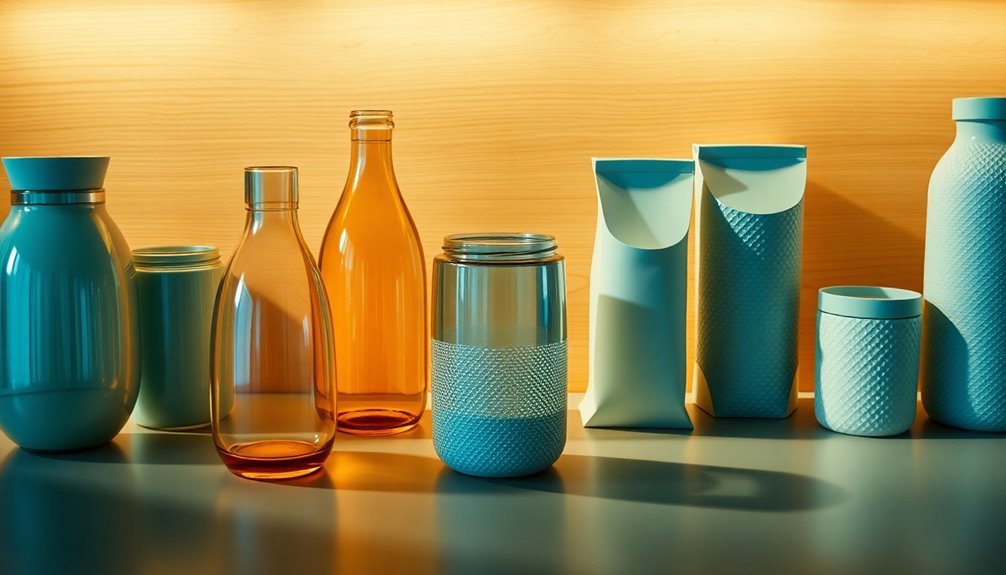
As brands compete for consumer attention, enhancing tactile and visual appeal has become essential in beverage packaging.
You'll find that innovative designs not only attract but also engage your senses. Consider these enhancements:
- Tactile Appeal: Sculpted designs, like Hard to Port's octopus bottle, invite you to touch and feel.
- Visual Identity: Crown's Emprint™ Tactile Printed Can captivates with its micro-embossed finish, creating stunning visuals.
- Sensory Engagement: Dogfish Head's ScratchnSniff feature lets you inhale aromas before purchasing, intensifying consumer interaction. Additionally, the use of essential oils in packaging can enhance the sensory experience, making products more appealing to consumers.
These elements enrich your experience, blending aesthetics with usability, and making products more memorable.
Portion Control Features
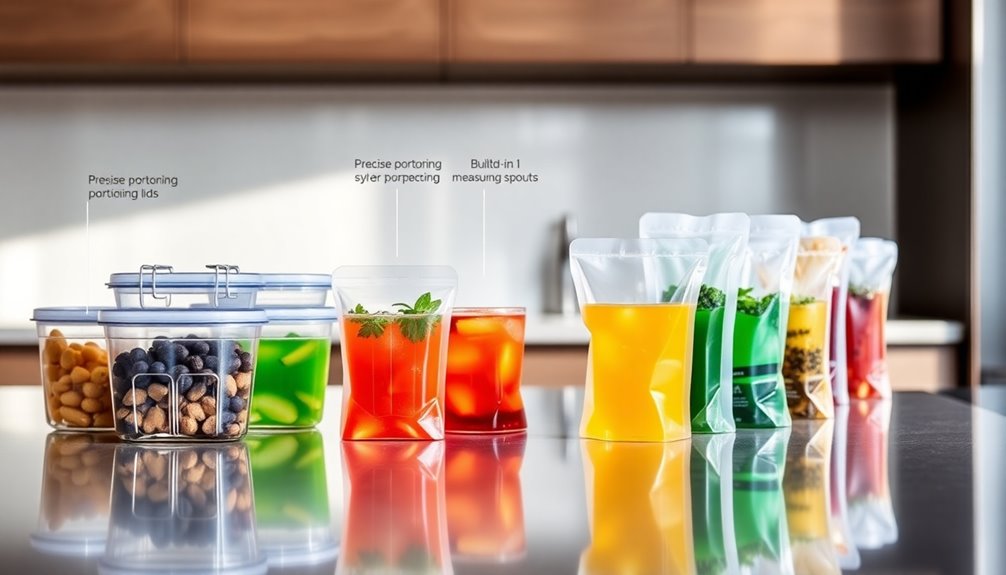
While you enjoy your favorite beverages, portion control features in packaging are becoming increasingly important. As consumers become more health-conscious and aware of their consumption habits, the demand for effective packaging strategies for beverages is on the rise. Brands are responding by designing packaging that clearly indicates serving sizes and calorie content, making it easier for individuals to make informed choices. These portion control features not only promote healthier drinking habits but also reduce waste, contributing to a more sustainable future.
These innovations, like single-serve containers, help you manage your intake effectively, reducing waste with pre-measured amounts. Resealable pouches are gaining popularity, allowing you to savor a drink now and save the rest for later without losing freshness.
Some brands even incorporate built-in measuring tools for precise pouring, perfect for cocktails or mixed drinks. Functional packaging, featuring temperature-sensitive labels, guarantees your beverage stays at the ideal serving temperature.
Plus, customizable packaging options let you add personal messages or images, enhancing your experience while promoting portion control through designated serving sizes.
Enjoy your drinks mindfully with these smart features!
IoT Integration in Beverage Storage
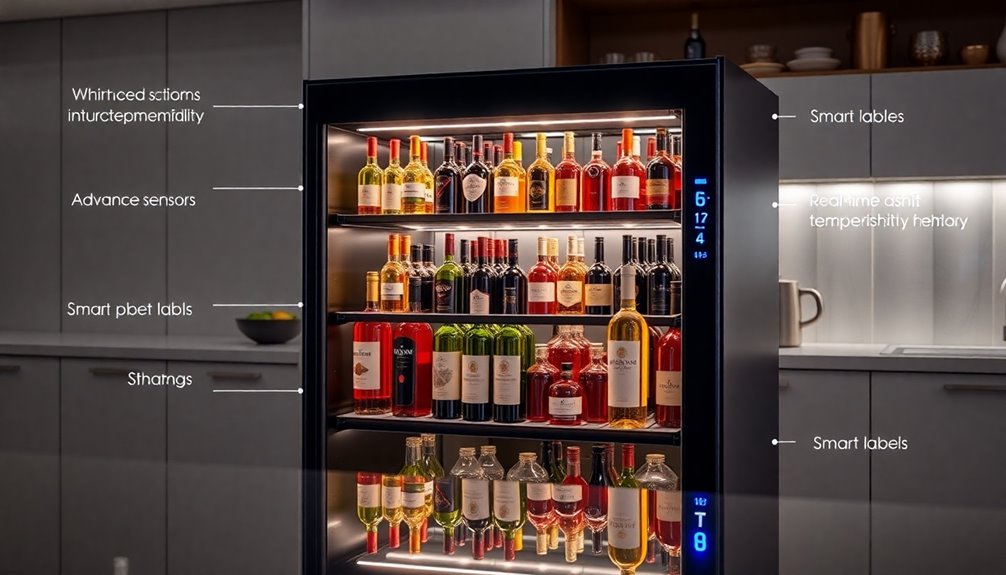
When you integrate IoT technology into beverage storage, you gain enhanced inventory management and real-time monitoring solutions.
This means you can track stock levels and environmental conditions effortlessly, ensuring your products remain fresh and of high quality.
With these innovations, you reduce spoilage and improve operational efficiency like never before.
Enhanced Inventory Management
Integrating IoT technology into beverage storage revolutionizes inventory management, allowing you to monitor environmental conditions in real time. This leads to enhanced inventory management, ensuring product safety and quality across the supply chain.
Imagine the advantages:
- Minimized Waste: Smart sensors track stock levels and expiration dates, reducing spoilage.
- Increased Transparency: Better tracking of ingredients supports your sustainability goals and builds consumer trust.
- Cost Efficiency: Automated guided vehicles and voice-controlled operations streamline processes, cutting labor costs.
- Data-Driven Insights: Leveraging AI automation enhances decision-making and optimizes inventory levels.
With these innovations in beverage packaging, you can optimize your operations while promoting sustainability.
Embrace IoT technology to enhance your inventory management and elevate your beverage business to new heights!
Real-Time Monitoring Solutions
Advancements in IoT technology are transforming how you monitor your beverage storage. With real-time monitoring, you can easily track environmental parameters like temperature and humidity, ensuring ideal food safety and product quality. Startups like BarrelWise Technologies offer smart barrel management systems that help winemakers analyze sulfur dioxide levels, reducing contamination risks. Additionally, implementing these technologies can enhance the effectiveness of HEPA filter vacuums, which are essential for maintaining a healthy indoor environment.
Here's a quick look at some benefits of IoT integration:
| Feature | Benefit | Impact on Business |
|---|---|---|
| Real-Time Monitoring | Enhanced safety compliance | Reduced spoilage |
| Smart Warehousing | Streamlined inventory | Improved operational efficiency |
| Data-Driven Insights | Quick decision-making | Lower labor and waste costs |
| Transparency | Better supply chain tracking | Increased brand trust |
With these innovations, your beverage storage can become more efficient and reliable.
Eco-Friendly Reusable Options
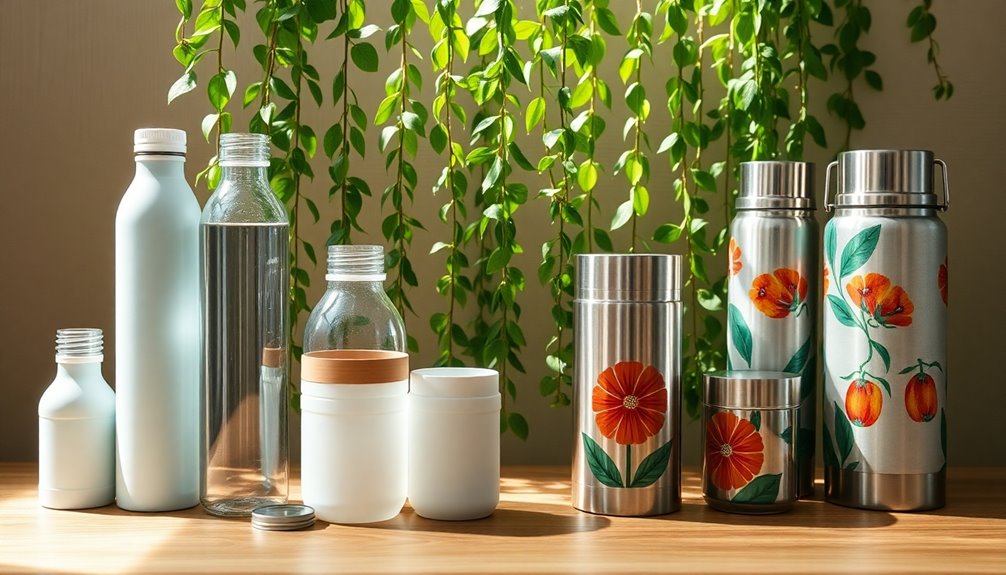
There's a growing trend in the beverage industry towards eco-friendly reusable options that not only benefit the environment but also enhance consumer experience.
Brands are stepping up with innovative packaging solutions that prioritize sustainability. Here are three standout features of these options:
- 100% food-grade recycled PET (rPET) – drastically cuts virgin plastic use and reduces carbon emissions.
- Lightweight, compostable bottles – like those from Two Drifters, which are 30% lighter and come with FSC-certified wooden tops.
- Smart designs like the Synlait Swappa Bottle – featuring stainless steel and QR codes to promote a circular economy.
These eco-friendly, reusable innovations show that sustainable packaging can be both practical and responsible, making your beverage choices more impactful. Additionally, energy-efficient designs in packaging can further contribute to reducing environmental footprints in the beverage industry.
Frequently Asked Questions
How Do Biodegradable Materials Break Down in Different Environments?
Biodegradable materials break down through natural processes involving microorganisms, moisture, and temperature.
In a composting environment, they decompose quickly, often within a few months, as the conditions are ideal.
In landfills, the process slows down due to limited oxygen.
In aquatic environments, some biodegradable materials can break down relatively fast, while others may take longer.
It's important to take into account these factors when choosing biodegradable options for waste reduction and environmental sustainability.
Can Smart Packaging Be Recycled or Reused?
Smart packaging can often be recycled or reused, but it depends on the materials and technology used.
You'll find that some smart packaging incorporates biodegradable elements, making it easier to dispose of responsibly.
However, not all smart packaging is designed with recycling in mind.
It's essential to check local guidelines and manufacturer instructions to guarantee you're recycling correctly, as improper disposal can lead to environmental issues.
Always stay informed about the packaging you use!
What Are the Costs Associated With Enhanced Functional Designs?
When you consider the sleek aesthetics of enhanced functional designs, the costs can seem intimidating.
Yet, investing in innovative packaging often saves you money in the long run. You might pay more upfront for advanced materials and technology, but these designs can reduce waste, improve efficiency, and attract more customers.
Balancing the initial expense against the potential savings and increased sales is key to making a smart decision for your business.
How Does Customization Impact the Production Process?
Customization greatly impacts the production process by requiring more precise planning and resources.
When you tailor products to meet specific needs, you often increase complexity in design and manufacturing. This means you'll need to invest in specialized equipment and training for your team.
Additionally, it can lead to longer lead times as you juggle various specifications.
However, the payoff can be worth it, as customized products often attract more customers and enhance satisfaction.
Are Temperature-Sensitive Features Safe for All Beverage Types?
Temperature-sensitive features aren't safe for all beverage types.
Some drinks, like carbonated sodas, can become unstable when exposed to extreme temperatures, risking explosions or leaks.
Others, like dairy or juices, need precise storage conditions to prevent spoilage.
You should always check the manufacturer's guidelines for specific beverage needs.
When in doubt, sticking to standard storage practices can help guarantee your drinks stay fresh and safe for consumption.
Conclusion
So, there you have it! With these beverage storage innovations, you can finally sip your drink while saving the planet—because who wouldn't want to feel like an eco-warrior while enjoying a soda? Gone are the days of boring, wasteful packaging. Now you can revel in the tactile joy of a bottle that's not just stylish but also smart! Cheers to sipping sustainably! Just remember, your beverage's eco-friendly features don't mean it can't still explode in your bag.
Cindy thoroughly researches juicing trends, techniques, and recipes to provide readers with practical advice and inspiration. Her writing style is accessible, engaging, and designed to make complex concepts easy to understand. Cindy’s dedication to promoting the advantages of juicing shines through her work, empowering readers to make positive changes in their lives through the simple act of juicing.

